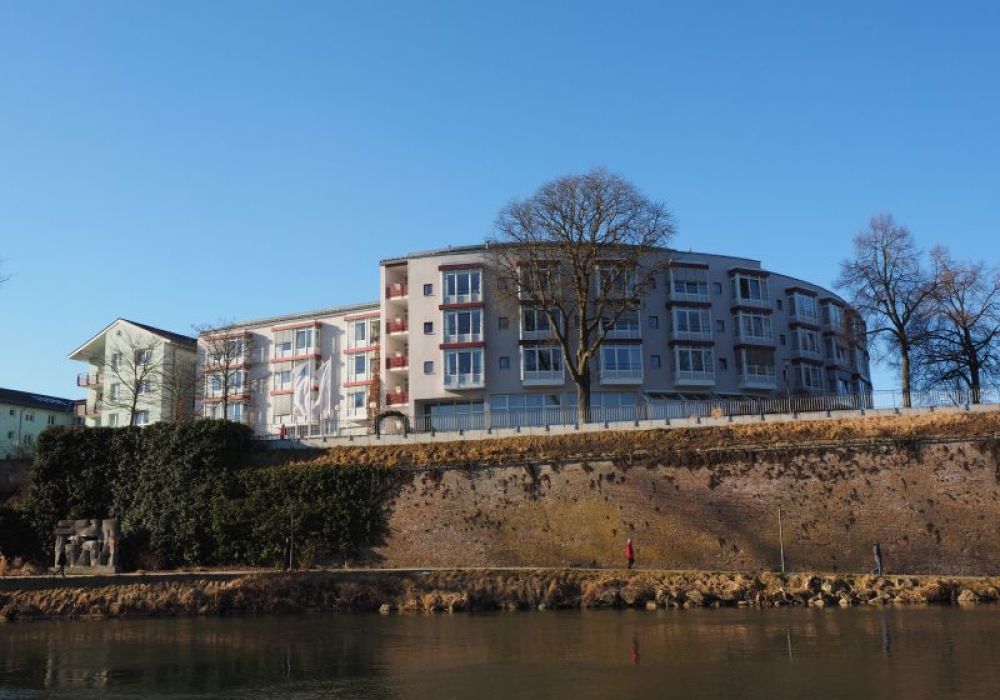How Senior Living Communities Can Boost Your Well-Being and Happiness

Are you thinking about moving to a senior living community after retirement? If so, you might be wondering what are the benefits of living in such a community and how it can affect your quality of life. In this article, we will explore some of the advantages of senior living communities and how they can help you achieve your goals of healthy aging and independence.
What Is a Senior Living Community?
Senior Living communities are designed with a target market over the age of 55 in mind, from amenities to location. They can vary in type depending on the age group, personal care needs, and types of properties available.
Independent Living Communities are residential living options for older adults that provide minimal healthcare assistance and are designed for seniors who can take care of themselves but want the convenience of living within a community that provides services like housekeeping, social activities, dining, and security.
An active retirement community is an established adult living area that has at least one resident living on each property over the age of 55. It's important to note that while these communities offer a vibrant, communal environment, they typically do not provide healthcare services or assistance with daily living activities.
Assisted Living communities are housing facilities for people with disabilities or for adults who cannot or choose not to live independently, offering personal care support services such as meals, medication management, bathing, dressing, and transportation.
Memory Care communities can also be categorized as assisted living communities, but they will have an increased focus on minimizing stress on memory-impaired residents
Retirement/Nursing Homes are the last type of senior living community, which are places for seniors who need constant medical care and have significant difficulty coping with the required activities of daily living, providing around-the-clock nursing and personal care. These are similar to assisted living but with more intensive care
Why Should I Choose a Senior Living Community?
There are many reasons why someone of or nearing retirement age might consider moving to a senior living community. Here are some of the most common ones:
Cheaper Cost of Living
Buying a retirement home in a senior living community may be a cheaper option if you still want to live independently but with the benefit of added amenities. The average cost of a senior living community is $1,500 – $4,000 per month. Comparatively, the average monthly mortgage payment in the United States is $1,595, while the average monthly rental payment is $1,062. The monthly cost of an active living community will depend on the state you reside in. Certain communities will require a one-time move-in fee as well.
What Factors Influence Senior Community Location
You can find a senior living community almost anywhere in the United States. However, the ideal location for these communities is in areas that see the sun all year round, which is mostly in the Sun Belt states, like Arizona and Florida. In fact, Florida has the highest number of active adult communities at 969 locations. Plus, you’ll find that most of these communities are strategically placed near quality medical facilities.

Safety and Security
These active retirement communities are typically gated and in areas with low crime rates. Guests of residents usually will need to be approved by those living in the communities. Some senior living communities also have on-site security teams for added safety.
How is Property Tax in Senior Communities
Property taxes tend to be lower in active adult communities, as these communities aren’t in dire need of supporting school funding and after-school programs like other residential neighborhoods are.
Encourages a Low Maintenance Lifestyle
From raking leaves to washing clothes, there’s always something that needs to be done when living at home. However, in a senior living community, you can enjoy a low-maintenance lifestyle where most of these chores are taken care of by the staff or included in your monthly fees. This way, you can spend more time doing what you love and less time worrying about home upkeep.
Personal Care Options in Retirement Facilities
As we age, there are daily tasks that get harder to do after a while. For example, you might need help with bathing, dressing, or taking medications. In a senior living community, you can have access to personal care options that suit your needs and preferences. Some communities offer assisted living services on-site or partner with local providers to deliver them to your home. Others have wellness centers or health clinics where you can receive medical attention or preventive care.
How Senior Facilities Support Healthy Senior Living
One of the main goals of senior living communities is to promote healthy aging and well-being among their residents. These communities offer various recreational and fitness facilities, such as pools, gyms, golf courses, or tennis courts, where you can stay physically active and fit. They also provide continuing education opportunities, such as classes, workshops, or lectures, where you can learn new skills or hobbies. Additionally, they focus on nutrition and offer healthy and delicious meals that cater to your dietary needs and preferences.
Transportation in Senior Communities
If you don’t drive or prefer not to, you can still get around easily in a senior living community. These communities provide transportation services that can take you to nearby shopping centers, restaurants, medical appointments, or other places of interest. Some communities also organize group trips or outings where you can explore new destinations and have fun with your fellow residents.

How Do Senior Living Communities Promote Socialization
For many seniors, the social aspects of senior living communities are a major selling point. These communities offer a variety of opportunities to enjoy meaningful social interaction, reduce loneliness and benefit overall health. You can join clubs, groups, or committees that match your interests and passions. You can attend events, parties or shows that entertain and inspire you. You can make friends, share stories, and support each other. In fact, Finnish researchers concluded in a 2021 study that the social activities typical in housing communities designed for older adults appear to support well-being and healthy aging effectively.
Potential Cons of Senior Living
The answer to this question depends on your personal situation, goals, and preferences. Senior living communities can offer many benefits for seniors who want to enjoy a comfortable, convenient, and fulfilling lifestyle in their golden years. However, they also come with some drawbacks, such as:
• Less privacy: Living in a senior living community means sharing spaces and facilities with other residents. You may also have less control over your home environment or schedule than you would in your own house.
• Fewer kids: For some seniors, living in an age-restricted community means missing out on the joys of having children or grandchildren around. Some communities have limits on how long visitors under the age of 55 can stay https://www.forbes.com/health/senior-living/55-plus-communities/.
• Less diversity: Living in a senior living community means being surrounded by people who are mostly similar to you in age, background, and interests. For some seniors, this can be boring or limiting.
Ultimately, the decision to move to a senior living community is a personal one that requires careful consideration of your needs, wants, and budget. You should do your research, visit different communities, talk to current residents and consult with your family and friends before making a choice.
Conclusion
Senior living communities are popular housing options for older adults who want to enjoy their retirement years in a comfortable, convenient, and fulfilling way. These communities offer many benefits for seniors who want to live independently but with access to amenities and services that support their well-being and happiness. However, they also have some drawbacks that need to be weighed against the advantages. If you are thinking about moving to a senior living community, you should do your homework and find the best option for your personal situation and needs.